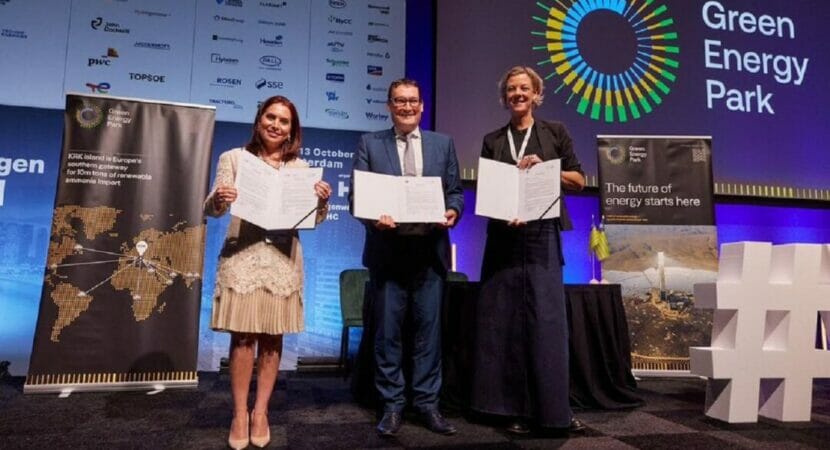
Piauí will receive R$50 billion em investment to produce green hydrogen – considered the fuel of the future. The contribution will come from the company Green Energy Park and the initial production expectation is 5 GW per year.
To make an investment of R$50 billion in the production of green hydrogen, considered the fuel of the future, the European company Green Energy Park signed an agreement with the Government of Piauí. This agreement provides for studies to be carried out for the construction of a green hydrogen park in Parnaíba and initial production of 5 GW of green ammonia per year. This is the largest green hydrogen project in the world!
Piauí has advantages to lead the global green hydrogen market
According to the government of Piauí, the Green Energy Park will take advantage of the structure of the Port of Luís Correia to export the fuel of the future produced in the form of ammonia through the Export Processing Zone, the ZPE of Piauí.
The raw material produced at the company will supply industries in Europe. The agreement between the company and the state government for the investment was signed last Wednesday (11) during the World Hydrogen Congress, held in the Dutch city of Rotterdam. For Rafael Fonteles, governor of Piauí, the closing of the agreement places the State as a leader in the global green hydrogen market.

According to Fonteles, the Piauí has competitive advantages to lead the new global green economy market that has green hydrogen, fuel of the future, as its main asset. This opens up extraordinary perspectives for Piauí, generating jobs and income for its people.
For Nathalia Everdosa, director of European Markets at Investe Piauí, the choice of the State for negotiations with the European company is due to the solar and wind potential that the state has. Present in the Netherlands for the World Hydrogen Congress, she was one of those who signed the agreement with Green Energy Park.
Agreement foresees initial investment of R$50 million
Nathalia explains that the state has great solar and wind potential, the cost of electricity and an abundance of water. This ends up attracting several investors in the sector. In addition, it also has support from the Government, which works to reduce bureaucracy.
The agreement signed with Green Energy Park provides for an initial investment of 10 billion euros, the equivalent of R$50 billion, and works should begin in 2024 and be completed in two years.
The fuel of the future will leave Piauí by sea and arrive at the Port of Krk, in Croatia, where Green Energy Park is based. Company executives will come to Piauí in November this year to carry out studies necessary to start the project.
Piauí leads the ranking in third place with the highest renewable production
In July, Piauí ranked third in the national ranking of wind and photovoltaic energy production, according to a report released by National Electric Energy Agency (Aneel) in the month of June. In the production of solar energy, in the form of centralized generation, which comprises large plants, the state's production is 1,4 GW in operation, in addition to 857,22 MW under construction and expected to generate more than 13,14 GW.
Regarding the distribution of solar energy, the state has 46.416 micro and mini plants in 220 municipalities, resulting in a total of 365,74 MW in operation. Regarding the generation of wind power, according to the Aneel bulletin, Piauí is only behind the states of Rio Grande do Norte and Bahia. In this sector, the State currently produces 3,5 GW in activity and also has 746,10 MV under construction and is expected to produce 2,5 GW in operations that are yet to be built.











